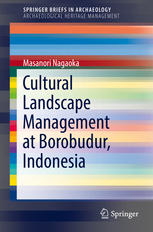

Most ebook files are in PDF format, so you can easily read them using various software such as Foxit Reader or directly on the Google Chrome browser.
Some ebook files are released by publishers in other formats such as .awz, .mobi, .epub, .fb2, etc. You may need to install specific software to read these formats on mobile/PC, such as Calibre.
Please read the tutorial at this link: https://ebookbell.com/faq
We offer FREE conversion to the popular formats you request; however, this may take some time. Therefore, right after payment, please email us, and we will try to provide the service as quickly as possible.
For some exceptional file formats or broken links (if any), please refrain from opening any disputes. Instead, email us first, and we will try to assist within a maximum of 6 hours.
EbookBell Team

4.0
36 reviewsThis volume investigates a historical account of the development of landscapes management at Borobudur. In the 1970s and 1980s, there was large scale heritage conservation intervention of the Borobudur Temple by UNESCO and a simultaneous attempt of a wider landscapes management at Borobudur.
But in the late 1980s and early 1990s, a global heritage discourse of an enlarged value system emerged. This discourse embraced issues such as cultural landscape, living history, intangible values, vernacular heritage, and urban landscapes with community involvement. The early 1990s saw a move against the European-dominated discourse of heritage as well as the concept of authenticity in the World Heritage system and other European-oriented classifications. The Asian experience in heritage discourse has begun to have a significant impact on the European standard. Additionally, in the 1990s, there was a gradual recognition of the concept of cultural landscape, which differed both within Asia and between Asia and Europe. These different ideas are evident in the case of the Borobudur Temple and its 1991 nomination to the World Heritage List.
This book focuses how the management of the Borobudur historical monument and its landscapes was developed and reached current exclusive national legislative framework and set as an example for others sites in the region and for other regions to consider.